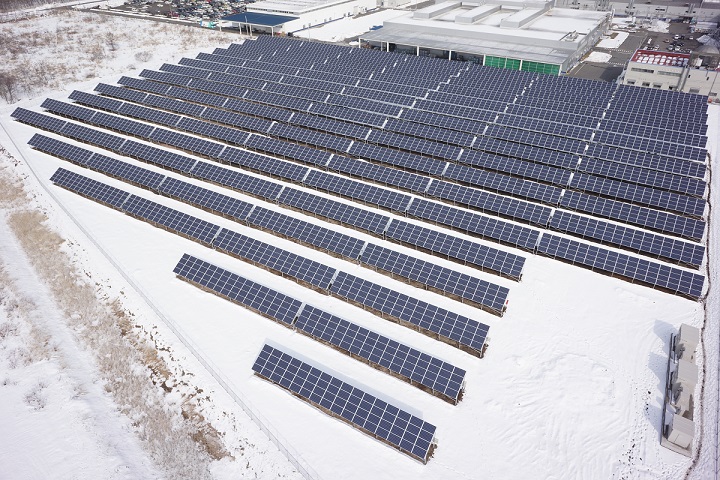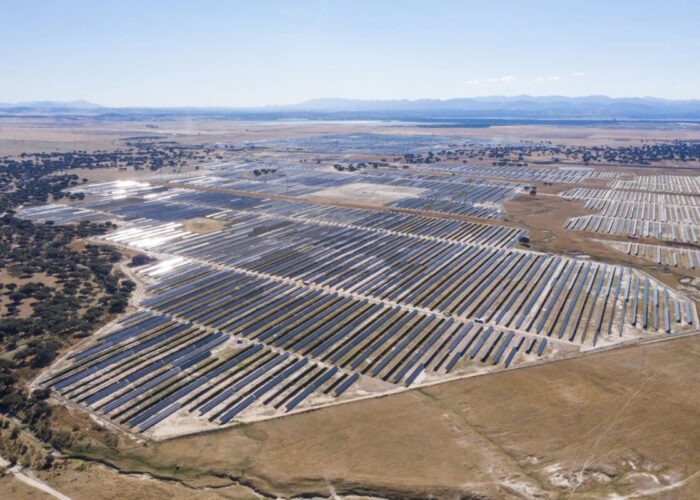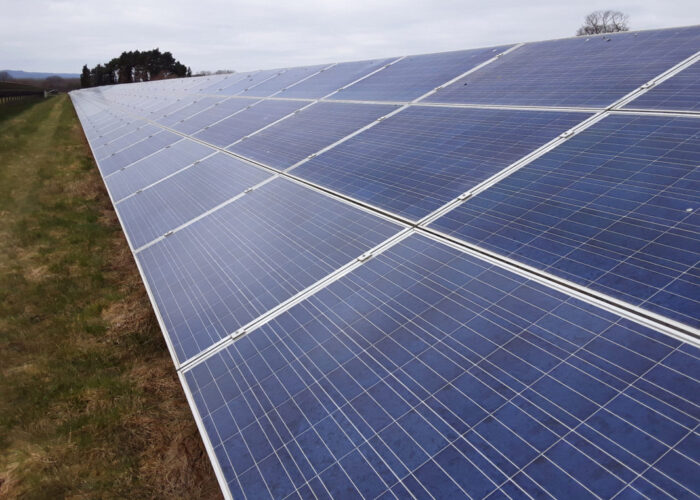
SolarPower Europe, the trade body representing the European solar industry, has published a report forecasting the next four years of solar power on the continent, headlined by the fact that European solar developers are on track to install a record 56GW of new solar deployments in 2023.
The report, ‘European Market Outlook for Solar Power 2023-2027’, forecasts that installed solar capacity in Europe will grow by 40% between 2022 and 2023, the third consecutive year in which year-on-year capacity additions increased by at least 40%. While the group expects the rate of new installations to slow down in 2024, expecting just 11% growth in new additions and 62GW of capacity to be installed, 2023 is on track to deliver increases in installed capacity in nine of the continent’s top ten solar markets.
Unlock unlimited access for 12 whole months of distinctive global analysis
Photovoltaics International is now included.
- Regular insight and analysis of the industry’s biggest developments
- In-depth interviews with the industry’s leading figures
- Unlimited digital access to the PV Tech Power journal catalogue
- Unlimited digital access to the Photovoltaics International journal catalogue
- Access to more than 1,000 technical papers
- Discounts on Solar Media’s portfolio of events, in-person and virtual
“Solar has continued to deliver for Europe in crisis with record-breaking installations,” said SolarPower Europe CEO Walburga Hemetsberger. “Now as solar hits its own turning point, Europe must deliver for solar.
“We are not yet installing the average 70GW annually needed to meet our 2030 solar targets,” Hemetsberger added. “It’s clear policymakers can’t afford to be complacent for the rest of the decade.”
Regional and sub-sector variation
In 2022, Spain overtook Germany to install the most solar capacity in Europe, adding 8.4GW of new capacity in 2022, compared to 7.4GW in Germany. However, the report expects Germany to return to the top of the leaderboard by the end of this year, expecting German capacity additions to almost double to 14.1GW of installed capacity, while growth in Spain is set to shrink its new additions to 8.2GW.
Spain is the only country in the report’s top ten solar markets by 2023 installed capacity forecast to install less new capacity in 2023 than the previous year. The report notes that, while the Spanish solar sector achieved “a significant milestone” in 2022, slowdown in rooftop PV in particular could impede the sector’s long-term growth.
According to SolarPower Europe, Spain will need to install 1.9GW of rooftop capacity each year over the next seven years to meet the 19GW of domestic solar capacity installations set out in the country’s National Energy and Climate Plan (NECP), a figure that has only been met once in the last decade.
The report also demonstrates how the mix of the European solar sector has changed in the last six years, with utility-scale and residential solar now contributing to the sector to a much larger extent, as demonstrated in the graph above. In 2020, 40% of the continent’s solar capacity consisted of commercial and industrial projects, compared to 30% from both residential and utility-scale solar projects.
In 2023, SolarPower Europe expects the sector to be split almost exactly between these segments, with 34% of the sector’s installed capacity met by utility-scale projects, and both commercial and industrial and residential solar providing 33%.
Manufacturing targets
Europe’s manufacturing sector, however, has been less productive, with the report’s authors noting that SolarPower Europe’s initial target of building 30GW of annual polysilicon, ingot, wafer, cell and module manufacturing capacity in Europe by 2025 “no longer seems feasible”.
Instead, the report concludes that 2030 would be a more realistic timeframe to meet this target. The European polysilicon manufacturing sector is already capable of producing 26.1GW of materials per year, but improvements will have to be made in the efficacy of the ingot, wafer and cell manufacturing sectors, which collectively produce 4.3GW of components annually.
However, the European inverter manufacturing sector is in better health, with the capacity to produce 82.1GW of inverters per year, a figure which meets the REPowerEU manufacturing targets, a component of the EU’s plan to install 750GW of solar capacity by the end of the decade. The report’s authors suggest that European governments could employ similar programmes to the Inflation Reduction Act in the US, and the Production Linked Incentive scheme in India, both of which have encouraged greater private and public investment into solar manufacturing capacity.
These conclusions echo what SolarPower Europe called “a deeply precarious situation” in September, with European manufacturing disincentivised on the global scale, as solar developers are able to source cheaper materials and components from the US and China.
NECPs and seven-year plans
The report also considers the future of the European solar sector, making predictions about the industry over the next seven years. Many European solar initiatives are governed by individual governments’ NEPCs, which were introduced in 2019 in a number of European countries, and then updated this year, and govern countries’ solar targets to 2030.
If all of the targets made in the 2023 updates are met, Europe will add 90GW more solar capacity than initially forecast by the end of the decade, and the 2023 updates could prove vital in expanding the European solar sector. However, as the graph below demonstrates, some of the continent’s biggest solar markets are well behind the targets for total installed capacity set out in both 2019 and 2023, with the Netherlands closest to reaching either set of targets.
All of these countries are also well below the SolarPower Europe “medium” scenario for the global solar sector, a situation that the trade body considers the most realistic of the scenarios it has forecast. This scenario includes the addition of 341GW of new solar capacity worldwide in 2023, and an expansion of the global solar sector to 3.5TW of installed capacity by 2027. There is particular concern in Spain and the Netherlands, where the governments are targeting close to or less than half of total capacity installations required in the SolarPower Europe medium scenario.
However, there is cause for optimism in Portugal, the only country on the continent profiled by SolarPower Europe to exceed the trade body’s medium scenario projection with its own updated NECP. While meeting this target will be a challenge, the increased ambition of many countries in Europe, many of which dramatically increased their solar power targets in the latest NECP updates, raises hope for the European solar sector to meet its targets.
Policy recommendations
SolarPower Europe also makes a number of policy recommendations for the remainder of the decade, to help the European solar sector better achieve its targets. These include maintaining what the body calls an “investment-friendly environment for solar PV” and improving in both grid and flexibility infrastructure. The body has committed to a number of infrastructure and logistical developments, including launching an action plan for faster grid connections, as it looks to improve all aspects of the European solar sector.
The trade body has also called for improvements to be made to planning and permitting procedures and diversify the continent’s solar supply chain, to both develop the European manufacturing sector in its own right, and reduce reliance on imports from markets such as China.
The group also notes that the European solar sector will need to employ one million people by 2025, up from around 648,000 in 2022, to support the growth of all parts of the continent’s solar supply chain. SolarPower Europe says governments “must rehabilitate technical education and jobs” and “ramp up their efforts to facilitate the movement of workers”, as part of a wider initiative across the global solar sector to improve employee training and deployment around the world.







